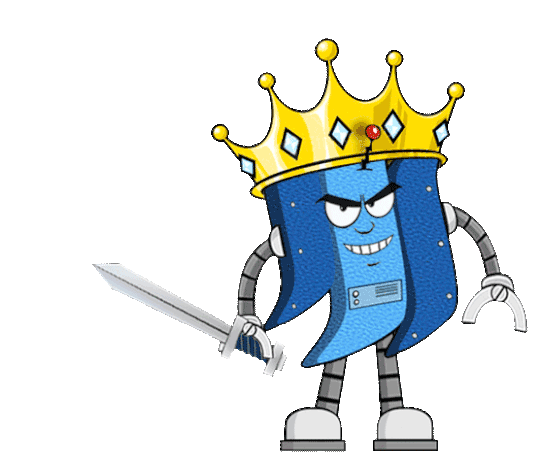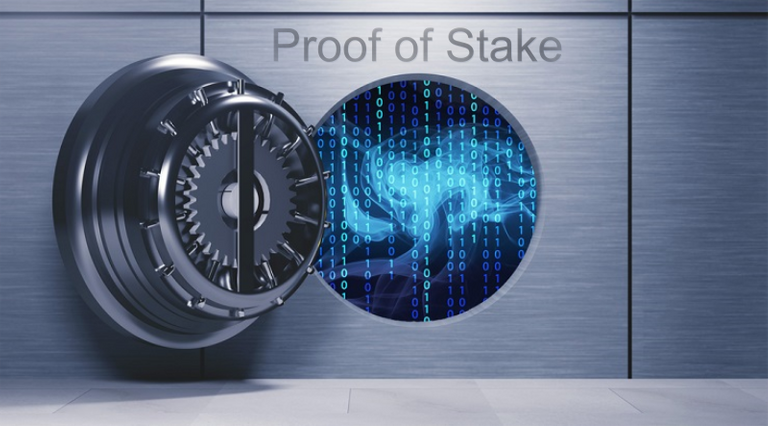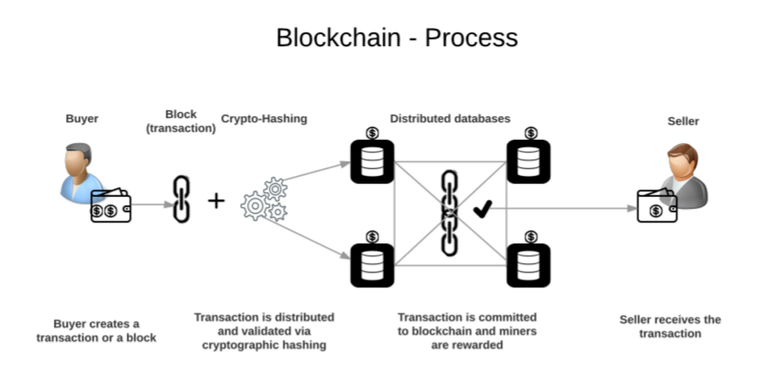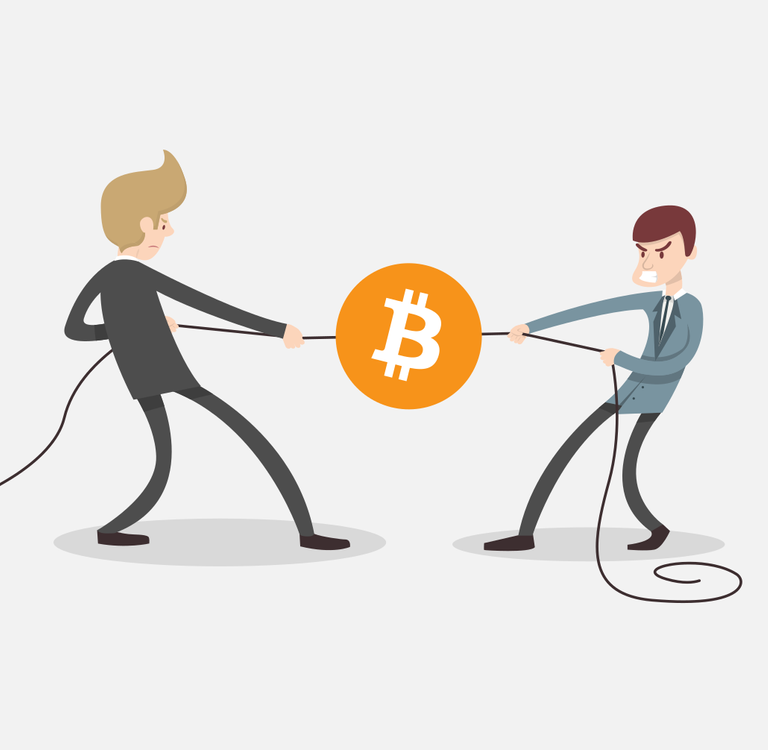This is article that i have made for my blog - https://fuk.io but i think its good enough to also be shared here.
“Proof of Stake has a bright future. In the worst case scenario, it is only used for small cap cryptocurrencies. Best case, a new dominant cryptocurrency consensus protocol which makes cryptocurrency more efficient, secure, and accessible to everyone”
As with nearly anything in cryptocurrency, there are many contradictory opinions when it comes to Proof of Stake and Proof of Stake (POS) cryptocurrencies. If you ask the internet, it's either a outright scam or the future of cryptocurrency.
The answer, as with many things, lies in the middle of the 2 extremes. Proof of stake has its faults, but it also holds a tremendous amount of upside potential. This article intends to clear up some information on proof of stake and inform readers of how this consensus mechanism works.
Introduction to how proof of stake works
For those unfamiliar with Proof of Stake, it can be thought of as a consensus engine similar to Bitcoin’s “Proof of Work”. Bitcoin’s big innovation was solving the byzantine generals problem, and once that was solved, others could improve on it. Proof of stake is one such improvement, choosing to use economic incentives and disincentives to secure the network rather than competitive wasteful POW mining.
While it may seem complicated, it's actually pretty simple if you know the basics of a blockchain. In Bitcoin specialized computers burn electricity hashing, which is the equivalent of trying combinations on a lock, to earn the right to create a new block and update the ledger.
This quickly became expensive in electricity and powerful computers. So if an attacker wanted to attack Bitcoin, they would have to invest in the electricity and powerful computers first. And, taking into account the block reward and transactions fees for this investment in mining, it quickly becomes more profitable just to participate in the system rather than attacking it.
Proof of stake, just went about this problem a different way. With proof of stake coins if you want to “mine” or produce more blocks, you first need to invest like in Bitcoin. But, instead of investing in specialized computers and electricity, you need to invest in the POS cryptocurrency itself.
Once you have bought the cryptocurrency to attack the system, your invested and it becomes more profitable to participate and be honest instead of attack. POS miners (stakers) get rewarded like Bitcoin miners do with new coins and transaction fees. But, in POS there is also disincentive, as if you are dishonest and do attack the network, your investment will be taken away from you. This disincentive of losing your coins, gives proof of stake networks high security very quickly, even before the coin matures or becomes economically valuable.
This is obviously a simplification of how the process works, but it covers the basics. Below is a chart comparing mining Bitcoin’s proof of work to proof of stake.
|
Proof of Work (ex. BTC) |
Proof of Stake (ex. PIVX) |
|
|
Investment required to become a miner |
Buying specialized computers and electricity |
Buying proof of stake cryptocurrency |
|
Incentivized to mine and secure the network |
Newly issued coins and transaction fees |
Newly issued coins and transaction fees |
|
Disincentivized to attack the network |
Would make mining computers useless |
Could/would lose coins put up for stake |
|
Barriers to Entry |
(Very High) not easy to participate at all: Economies of scale, electrical contracts, specialized computers, fast networks |
(Low): Easy for anyone to participate with average computer and connection to internet |
The Good about Proof of Stake
- Doesn’t purposely waste electricity
- Is secure and solves the same problem as Proof of Work
- POS is actually more secure in many cases
- Everyone can participate in Mining
- Investment can go into the protocol instead of external mining computers and electricity
Staking
As mentioned above, the process of “mining” or securing the network in a POS system is called Staking. When you stake your cryptocurrency, you basically lock coins in your wallet as collateral that you will not be dishonest. And if you are honest and participate in relaying transactions and securing the network, then you are rewarded with new coins and fees. If you are dishonest and attack, you lose your coins.
An exciting benefit of proof of stake, which is that anyone can stake. There are very few barriers to entry when it comes to staking. If you have a computer which is on 24/7 and can run a wallet, you can stake. And for those that don’t have either, there are services that will stake your coins for you and make it even easier to participate in mining.
The downside of Proof of Stake: it's not Bitcoin
While proof of stake is superior in many ways, it does have downfalls compared to Bitcoin.The original Bitcoin idea and white paper struck a beautiful balance of incentives. Proof of work is a ruthless and extremely competitive consensus mechanism because it is so wasteful. While it bad for the environment, it is also a hidden gem to why Bitcoin is so valuable.
One point being it requires constant re-investment, innovation, and competition. Miners always have an incentive to get better: cheaper electricity, better miners, better cooling, faster connections ect... They also become so invested in otherwise useless infrastructure, that they have to innovate, market, and passionately pursue users and use cases to grow the Bitcoin network and make Bitcoin profitable, otherwise they will lose their investment.
Proof of Stake Can get Lazy
Proof of stake doesn’t have this, which is its biggest downfall as an economic system. Miners do not have to continuously invest and innovate and can be quite lazy and still participate. There is also the issue of “The rich getting richer”. Rich lazy stakers can just sit back and grow proportionately richer compared to new participants, without doing any extra work. As they have significantly less incentive to improve the system and drive value than POW miners.
But with that being said, not all cryptocurrencies are driving and competing specifically to be money like Bitcoin. Ethereum is a good example, which is why it is switching to proof of stake. Ethereum was never meant to be “money” like Bitcoin, but rather a decentralized application platform with a monetary token. And while rich stakers can be lazy, they still have economic incentive to increase the value of their holdings and staking rewards.
Different Varieties of Proof of Stake
As of this writing Bitcoin and Ethereum both use proof of work. However, they are completely different varieties of the proof of work consensus mechanisms. The use different miners, different block rewards, different transaction fees, and are just different. However, they reach consensus the same way by using computers to wastefully burn electricity in order to secure the network.
The same variety exist within proof of stake. 2 coins can both be proof of stake, but be completely different at the same time. Some examples of aspects they can differ in are:
- Issuance Rate (% APR equivalent)
- Staking Frequency
- Staking Maturity (how long coins need to stake before they can mine)
- Required stake(collateral) to mine
This list is not all encompassing, as there are many other ways POS coins can differ
Different Types of Proof of Stake
So while there are many varieties of proof of stake, there are also different implementations or types. Proof of Stake is a general term and describes a lot in regards to the consensus model. However, proof of stake is commonly used alongside other consensus mechanisms which allows it to take on different properties.
|
Type of POS |
Simple Description |
Example coins |
|
General Proof of Stake |
any wallet with staking setting on receives staking rewards for being connected and helping secure/connect network. |
|
Masternode Proof of Stake |
Large stakers get extra privileges and rewards and is usually combined POW or normal POS |
POS:PIVX EXCL |
Delegated Proof of stake |
Top wallets/people are selected via votes to be able to produce blocks and earn staking rewards |
BTS EOS Steemit |
Leased Proof of stake |
Combination masternode, delegated POS, and Normal POS. |
Waves |
How to get involved
So now that you have the general overview of what proof of stake, now comes how to get involved! There are hundreds of Proof of Stake coins and projects doing 100’s of different things that you can learn about and get involved in. Whether its running a masternode and sending private transactions on Exclusive coin, or participating in voting on DPOS on BTS, STEEMIT, or EOS. There are countless opportunities to get involved.
Very soon Ethereum the 2nd largest cryptocurrency by market cap will go proof of stake! This will be a huge boost for proof of stake and will bring the technology into the limelight.
Getting some POS Coins
The first part in getting involved with any proof of stake project is to get some coins! You don’t need to invest a large amount of money, or invest at all to get involved. However, if you do decide to invest always always do your own research and take note these are very high risk investments and this article is in no way financial advice.
Start Staking
Once you have some coins put them to work and earn staking rewards. Staking wallets are no harder than normal desktop wallets to run. However, like any desktop wallet, they do require some skills and take up storage and resources from your computer. If you are not the best with computers, or if your computer is slow enough already without wallets, staking pools are a great option
Conclusion
In conclusion, proof of stake is a promising consensus mechanism with a lot of potential upside in the future. It competes well will the popular proof of stake cryptocurrencies, and has the potential to surpass them in the future not wastefully burning electricity and rather investing and improving speed and usefulness of POS networks. And one of the most important aspects of proof of stake is that its very easy to get involved and unlike POW, anybody anywhere can participate in proof of stake mining and collect many coins at these cheap prices.
CRYPTO INCOME GUIDE EBOOK - FREE FOR LIMITED TIME - DOWNLOAD HERE
Join My Official Discord Crypto/Steemit Group - https://discord.gg/Ma3VCxj
cryptocurrency blog for unique news, tips and mailing list specials! Follow, Resteem and VOTE UP @kingscrown creator of |
 |
|---|






There are many other problems with POS.
But the main one i hate is that it is easy for someone to become top dog, and rule the entire coin at their whim. The distribution of coins is never equal. And the Pareto Distribution shows
80% of the coins is owned by 20% of the people
64% of the coins is owned by 4% of the people.
This has deleterious effects on POS.
And we experience this sort of thing on Steem. Where we have a normal 80% gets a whale upset, and blam, their payouts are zero, nothing, zilch. The whale had to barely drop a percentage into a downvote. And there is nothing the minnow can do. (inside the system)
https://steemit.com/@curatorhulk
To me POW is still the best and the most secure and can inc decentralization if done right
Well said man! POS is the next iteration..... that being said, it makes sense to remember it all started with POW.
Pos makes more sense then pow. Pos gives more value to coins since ur locking them up to stake. The downfall is to few people do it or know how which ends up centralizing it just as much as pow with hardware. Neither system is optimal nor do I think we will ever really fund a true decentralized system. it would mean everyone has the same which is socialists country and as we have seen that's not the best. It removes passion and the will to thrive and overcome.
Posted using Partiko Android
Hi @kingscrown!
Your UA account score is currently 7.268 which ranks you at #69 across all Steem accounts.
Your rank has not changed in the last three days.Your post was upvoted by @steem-ua, new Steem dApp, using UserAuthority for algorithmic post curation!
In our last Algorithmic Curation Round, consisting of 302 contributions, your post is ranked at #12.
Evaluation of your UA score:
Feel free to join our @steem-ua Discord server